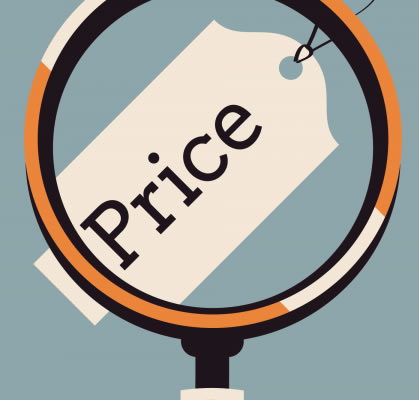In this article, we’ll explore the importance of real-time price monitoring and how it can benefit businesses of all sizes.
Table Of Contents For Real Time Price Monitoring
- What is Price Monitoring?
- Types of Price Monitoring
- Benefits of Automated Price Monitoring
- Why is Real-Time Price Monitoring Important?
- Stay Competitive
- Adapt to Market Dynamics
- Leverage Competitive Intelligence
- Respond to Price Changes Instantly
- Identify Market Trends
- Spot Emerging Patterns
- Understand Consumer Behavior
- Improve Profit Margins
- Optimize Pricing Strategies
- Reduce the Risk of Underpricing
- Enhance Price Positioning
- Avoid Price Wars
- Prevent Unnecessary Discounting
- Maintain Brand Value
- Strategic Decision-Making
- How Can Businesses Implement Real-Time Price Monitoring?
- Real-World Examples of Real-Time Price Monitoring in Action
- Who Is Responsible for Real-Time Price Monitoring?
- Final Thoughts
What is Price Monitoring?

Price monitoring is the process of tracking and analyzing the prices of products or services offered by your business and your competitors. It allows you to stay informed about market trends and adjust your pricing strategy accordingly. Price monitoring can be done manually, but in today’s fast-paced retail environment, businesses need to use automated tools for real-time monitoring.
Types of Price Monitoring
There are several types of price monitoring that businesses can utilize, each with its specific focus and benefits
Retail Price Monitoring
Retail price monitoring involves tracking the prices of products sold by retailers, including your own store and your competitors. This type of price monitoring is important for retailers who want to stay competitive and attract customers with the best prices. It helps businesses understand their position within the market and can inform promotional strategies.
Manufacturer Price Monitoring

Manufacturer price monitoring involves tracking the prices of products sold by manufacturers to retailers. This is crucial for manufacturers who want to ensure that their products are being sold at the correct price and that retailers are not undercutting their pricing. It can also be used to monitor the Minimum Advertised Price (MAP) compliance.
Online Price Monitoring
With the growth of e-commerce, online price monitoring has become particularly critical. This involves tracking prices across various online platforms, including marketplaces like Amazon and eBay, and individual e-commerce sites. It enables businesses to react swiftly to price changes and maintain their competitive edge in the digital space.
Service Price Monitoring
For businesses that offer services rather than physical products, service price monitoring is key. This involves keeping tabs on how much competitors charge for similar services. It is essential for maintaining competitive service offerings and can be pivotal in contract negotiations or when setting standard pricing models.
Benefits of Automated Price Monitoring
Automated price monitoring offers numerous advantages over manual tracking, making it a preferred choice for many businesses.
Efficiency and Time-Saving
Real-Time Data
Historical Data Analysis
Efficiency and Time-Saving
Automated tools can monitor prices around the clock without human intervention, saving hours of work and minimizing the potential for error. This efficiency allows businesses to allocate resources to other critical tasks.
Real-Time Data
Automated price monitoring provides real-time data, which is crucial for making timely decisions. In a dynamic market, having the latest information can mean the difference between capitalizing on an opportunity and missing out.
Historical Data Analysis
Automated tools often come with the capability to store and analyze historical price data. This can be invaluable for identifying long-term trends, seasonality effects, and the impact of past pricing strategies.
Why is Real-Time Price Monitoring Important?

Real-time price monitoring provides businesses with valuable insights and allows them to make data-driven decisions. Here are some of the key benefits of real-time price monitoring:
Stay Competitive
Adapt to Market Dynamics
Leverage Competitive Intelligence
Respond to Price Changes Instantly
Identify Market Trends
Spot Emerging Patterns
Understand Consumer Behavior
Improve Profit Margins
Optimize Pricing Strategies
Reduce the Risk of Underpricing
Enhance Price Positioning
Avoid Price Wars
Prevent Unnecessary Discounting
Maintain Brand Value
Strategic Decision-Making
Stay Competitive
In today’s retail landscape, consumers have access to countless options and can easily compare prices with a few clicks. Real-time price monitoring allows businesses to stay competitive by ensuring that their prices are in line with their competitors. It also allows them to adjust their prices quickly in response to market changes or competitor pricing strategies.
Adapt to Market Dynamics
The market can shift rapidly due to various factors, including economic changes, seasonal trends, or new entrants. By having a real-time view of the market, businesses can adapt their pricing to maintain competitiveness as these dynamics unfold.
Leverage Competitive Intelligence
Real-time price monitoring goes beyond just tracking; it also provides competitive intelligence. Understanding why competitors are pricing their products a certain way can inform your broader market strategy and positioning.
Respond to Price Changes Instantly
With real-time data, businesses can respond to price changes made by competitors almost instantly, preventing loss of sales or market share. This agility is particularly important during high-traffic periods such as holidays or sales events.
Identify Market Trends

By monitoring prices in real-time, businesses can identify market trends and adjust their pricing strategy accordingly. For example, if a particular product is selling well at a higher price point, businesses can adjust their prices to maximize profits. Similarly, if a competitor is offering a product at a lower price, businesses can use this information to adjust their pricing strategy and stay competitive.
Spot Emerging Patterns
Real-time price monitoring can help businesses spot emerging patterns before they become obvious to the entire market. This early detection can be critical in gaining a first-mover advantage.
Understand Consumer Behavior
Price sensitivity and consumer behavior can be assessed through price monitoring. Businesses can learn which price points are more acceptable to their customers and adjust their pricing strategies to match consumer expectations.
Improve Profit Margins
Real-time price monitoring can also help businesses improve their profit margins. By monitoring prices of their own products and those of their competitors, businesses can identify opportunities to increase their prices without losing customers. This can lead to increased profits and a more sustainable business model.
Optimize Pricing Strategies

Analyzing real-time pricing data allows businesses to optimize their pricing strategies, finding the sweet spot between competitiveness and profitability. It can guide decisions on when to run promotions or discounts, and how to structure tiered pricing models.
Reduce the Risk of Underpricing
With a clear understanding of the competitive landscape, businesses are less likely to underprice their products or services, which can erode profits and devalue their brand.
Enhance Price Positioning
By understanding competitor pricing, businesses can position their prices to appeal to their target market more effectively. This might involve positioning as a premium provider or as a cost-effective alternative, depending on the competitive data.
Avoid Price Wars
Price wars occur when businesses engage in a race to the bottom by constantly lowering their prices in an attempt to attract customers. This can be detrimental to businesses, as it can lead to decreased profit margins and a damaged brand reputation. Real-time price monitoring can help businesses avoid price wars by staying informed about their competitors’ pricing and making strategic pricing decisions.
Prevent Unnecessary Discounting
Real-time price monitoring helps prevent unnecessary discounting by providing insight into the actual competitive landscape. This can stop a business from reducing prices too far in a misguided effort to stay competitive.
Maintain Brand Value
Maintaining consistent and fair pricing helps preserve the value of a brand. Real-time price monitoring ensures that a business’s pricing strategy reflects its brand positioning and value proposition.
Strategic Decision-Making
Armed with current pricing data, businesses can make strategic decisions to engage or avoid price wars, depending on their overall strategy and market position. This can involve selective price matching or targeted promotions rather than across-the-board price cuts.
How Can Businesses Implement Real-Time Price Monitoring?

Real-time price monitoring can be implemented through the use of automated price monitoring tools. These tools allow businesses to track prices in real-time and receive alerts when prices change. They can also provide businesses with in-depth analytics and insights to help them make informed pricing decisions.
Choosing the Right Price Monitoring Tool
Assessing Features and Capabilities
Integration with Existing Systems
Evaluating Ease of Use and Support
Setting Up Alerts and Notifications
Customizing Alert Thresholds
Selecting Key Competitors and Products
Utilizing Analytics and Reporting
Choosing the Right Price Monitoring Tool
When selecting a price monitoring tool, it’s important to consider several factors to ensure it meets your business needs.
Assessing Features and Capabilities
Different tools offer different features, so it’s crucial to assess which capabilities are most important for your business. Look for tools that provide real-time alerts, customizable dashboards, and comprehensive reporting features.
Integration with Existing Systems
Ensure that the price monitoring tool you choose can integrate seamlessly with your existing technology stack. Integration with other business systems like inventory management, CRM, or e-commerce platforms can enhance efficiency and data accuracy.
Evaluating Ease of Use and Support
The user interface should be intuitive and easy to navigate. Additionally, consider the level of customer support provided by the tool’s vendor, including training, help documentation, and customer service responsiveness.
Setting Up Alerts and Notifications
Real-time monitoring is most effective when you can be alerted to changes as they happen.
Customizing Alert Thresholds
Set up custom alert thresholds to be notified of significant price changes that require immediate attention. This ensures that you are not overwhelmed by notifications for minor fluctuations.
Selecting Key Competitors and Products
Choose which competitors and products to monitor more closely. Focusing on key players and high-priority items can make your price monitoring efforts more targeted and effective.
Utilizing Analytics and Reporting
Take advantage of the analytics and reporting features of your price monitoring tool to understand the implications of price changes and make informed decisions.
Real-World Examples of Real-Time Price Monitoring in Action
Let’s take a look at some real-world examples of how businesses have successfully implemented real-time price monitoring to improve their bottom line.
- Amazon
- Walmart
- Nike
Amazon

Amazon is a prime example of a company that has mastered the art of real-time price monitoring. The e-commerce giant uses sophisticated algorithms to monitor prices of products on its platform and adjust prices in real-time to stay competitive. This has allowed Amazon to maintain its position as a leader in the online retail space and attract customers with the best prices.
Dynamic Pricing Model
Amazon’s dynamic pricing model allows it to adjust prices on millions of products throughout the day. This strategy keeps prices competitive and maximizes profit margins by responding to supply and demand changes.
Algorithmic Repricing
Amazon’s algorithmic repricing tools consider factors such as competitor pricing, inventory levels, and sales performance to automatically adjust prices. This level of automation is a benchmark for the industry.
Consumer Trust and Loyalty
By consistently offering competitive prices, Amazon has built consumer trust and loyalty. Customers often start their online shopping journey on Amazon, knowing they are likely to find good deals.
Walmart

Walmart is another major retailer that has implemented real-time price monitoring to stay competitive. The company uses a combination of automated tools and manual monitoring to track prices of its own products and those of its competitors. This has allowed Walmart to offer its customers competitive prices while maintaining healthy profit margins.
Omnichannel Price Consistency
Walmart ensures that prices are consistent across all channels, whether in-store or online. Real-time price monitoring helps maintain this consistency, which is crucial for customer satisfaction and brand integrity.
Price Matching Guarantees
Walmart’s price matching guarantees are supported by its real-time price monitoring efforts. This policy not only attracts price-conscious customers but also reinforces Walmart’s image as a value-for-money retailer.
Leveraging Data for Strategic Initiatives
Walmart uses the data from price monitoring to inform its broader strategic initiatives, such as exclusive product launches or special promotions, to stay ahead of the competition.
Nike

Even manufacturers can benefit from real-time price monitoring. Nike, for example, uses real-time price monitoring to track the prices of its products sold by retailers. This allows the company to ensure that its products are being sold at the correct price and to identify any instances of price undercutting by retailers.
Protecting Brand Image
By monitoring retail prices, Nike ensures that its brand image is upheld and that its products are not devalued through heavy discounting or inconsistent pricing across retailers.
MAP Compliance
Nike can enforce MAP policies more effectively by using real-time price monitoring to ensure retailers adhere to agreed-upon pricing guidelines.
Strategic Partnerships
Understanding the pricing strategies of retail partners enables Nike to forge more strategic partnerships and collaborate on pricing decisions that benefit both parties.
Who Is Responsible for Real-Time Price Monitoring?

In most businesses, the responsibility for real-time price monitoring falls on the sales or marketing team. However, in larger organizations, a dedicated team or individual may be responsible for implementing and managing the price monitoring process.
Roles and Responsibilities
Sales Team Involvement
Marketing Team Input
IT and Data Analytics Support
Training and Development
Continuous Learning
Best Practices Sharing
Professional Development Opportunities
Roles and Responsibilities
Defining clear roles and responsibilities ensures that price monitoring efforts are organized and effective.
Sales Team Involvement

The sales team, being directly connected to revenue generation, has a vested interest in competitive pricing and can provide valuable insights for price monitoring.
Marketing Team Input
The marketing team often uses pricing information to craft promotional messages and positioning strategies, making their involvement crucial in the price monitoring process.
IT and Data Analytics Support
IT and data analytics teams play a supporting role by ensuring the proper implementation of price monitoring tools and the analysis of collected data.
Training and Development
Ensuring that the responsible teams are well-trained in using price monitoring tools and understand the importance of pricing strategies is key to successful implementation.
Continuous Learning
The retail landscape is always evolving, so teams need to engage in continuous learning to stay updated on the latest price monitoring techniques and tools.
Best Practices Sharing

Encouraging the sharing of best practices within the organization can improve the effectiveness of price monitoring efforts.
Professional Development Opportunities
Investing in professional development opportunities for team members can enhance their skills and contribute to better price monitoring results.
Final Thoughts
Real-time price monitoring is a crucial tool for businesses looking to stay competitive in today’s fast-paced retail landscape. By using automated tools and

Do you want to be a successful player in e-commerce?
- You must keep a close monitoring on what your competitors are doing
- Know the product’s pricing points.
- Use Price Monitoring Tools
- Use Dynamic Pricing Strategies
- Automatically Update Your Products According To Your Competitors.
Join PriceRest for better dynamic pricing strategies for your short- and long-term sales processes.
To have a better understanding of e-commerce for success, join today!
And see What PriceRest can do for you.
Request a personalized demo of PriceRest
We look forward to showing you how our platform allows you to optimize the pricing, execution, and measurement initiatives that matter most to your brand and products.
It is Free!
What can I expect?
- A brief conversation to assess what PriceRest can do to help your pricing strategy
- Live product demo with insight into how to get the most benefit from PriceRest
- Discuss your prices KPIs to determine the best path forward for your business
- No commitment required

